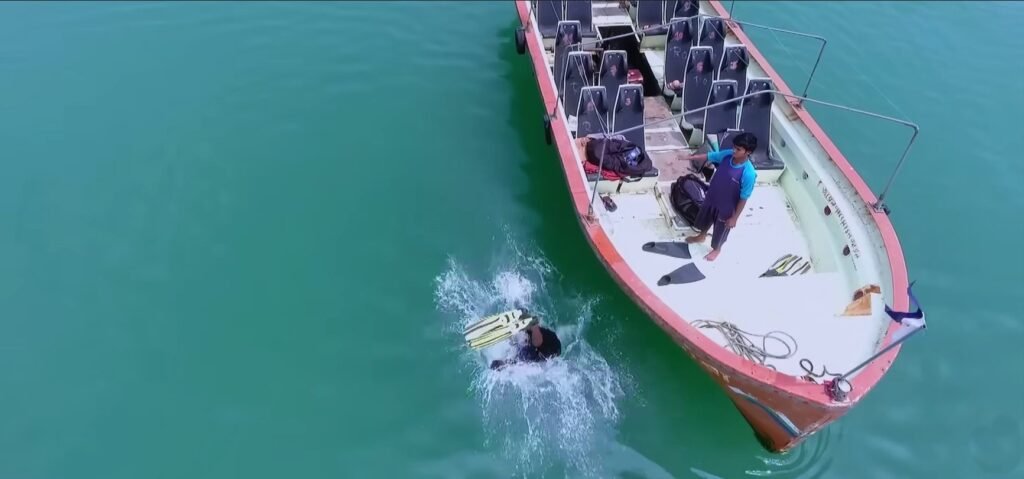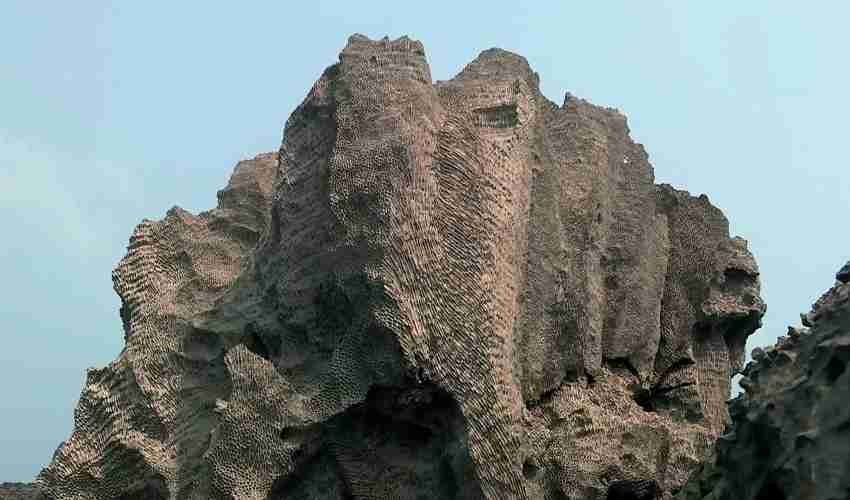The Origins And Natural Beauty of Saint Martin Island
Explore the rich history and breathtaking beauty of Saint Martin Island and Discover its natural wonders.
Saint Martin’s is the only coral island in Bangladesh, located in the northeast of the Bay of Bengal. This island is very attractive to both local and foreign tourists because they cannot visit it at any time of the year.
First Human at Saint Martin
Approximately 450 years ago, the southernmost part of the Chittagong hill range, known as the Teknaf Hill Range, was submerged in the Bay of Bengal.
Over time, it re-emerged as an island. Around 250 years ago, Arab traders, who sailed across the Bay of Bengal for trade, anchored on this island while traveling from Chittagong to Arakan.
In Arabic, the word for “island” is “Jazeera”, which means a place of waiting. The island was filled with shady coconut trees, and over time, the name Jazeera transformed through local pronunciation into Jinjira.
Owing to the high number of coconut trees, the island was eventually called Narikel Jinjira, meaning “Coconut Island.” In 1900, a British land survey team arrived and officially renamed the island Saint Martin’s Island.
Journey By Ship
We are heading to Saint Martin Island. On our way, the legendary Shah Porir Island seems to be calling us with open arms.
We are crossing the international Naf River, which is half owned by Myanmar and half by Bangladesh. Look over there—that’s Maungdaw, a town in Myanmar.
Saint Martin’s Island is located about 10 kilometers from Teknaf, the southernmost settlement of Bangladesh. And here we are—finally at Saint Martin’s Island!
Rising about three and a half meters above the sea, this beautiful island stands at the confluence of the Naf River and the Bay of Bengal, surrounded by crystal-clear blue-green waters.
From far and wide, countless travel enthusiasts rush to this dreamlike island, fulfilling their long-cherished desire to explore its beauty.
As the ship docks and travelers step onto the island, their faces light up with the excitement of conquering this dream island.
Here, waves from the Arabian Sea and the Indian Ocean crash against the shores, whispering songs of the distant horizon. Perhaps this island should have been named the Island of Tranquility, as serenity overflows in every corner.
Stretching from north to south, the size of Saint Martin’s Island changes with the tides—expanding to about 9 square kilometers during low tide and shrinking to 5 square kilometers at high tide.
The golden sandy shores and rocky terrain of this island are transformed into a tropical oasis by the presence of Keora trees, Casuarina (Jhau) groves, and countless coconut palms.
Beauty of Saint Martin
Saint Martin’s Island is full of coconut trees—around 150,000 of them. That’s why locals often call it Narikil Jinjira instead of Saint Martin. The island’s first hotel, once named Avakash, now goes by the name Saint Martin Resort.
Since 1997, many hotels and resorts have popped up on the island’s northern side to welcome tourists. Visitors who want to save money can stay in cozy local homes.
A Beach Full of Life and Local Delights
The beach now offers more fun activities than ever before. Tourists enjoy the clear waters, take relaxing baths, and leave their city stress behind. The beach feels like a fun playground where anyone can explore and enjoy freely.
In some areas, rocky parts of the beach draw nature lovers, especially in the evening. People take photos to capture special memories. The island’s beauty shifts from dawn to dusk, making every hour magical.
At sunset, the beach market comes alive. Tourists stroll around, buying souvenirs like jewelry, home decor, colorful clothes, and more—all at fair prices.
If you love dried fish, you’re in luck. The island offers a wide variety—big, small, and medium—making it a favorite stop for dried fish lovers.
Food
At the nearby small and large food stalls, there is a bustling arrangement of frying fresh fish. The fish, marinated with raw spices, is fried over an intense flame, turned and flipped repeatedly.
Whether it’s giant-sized prawns or any other seafood, the vendors will barbecue it for you.
In front of the food stalls, rows of fish are arranged neatly. First, you observe, and then the bargaining begins. All the fish here are freshly caught from the sea.
The fish, after being priced, is coated with spices and placed over the fire for grilling.
The joy of barbecuing excites the tourists. The flavorful, spicy, and crispy fried seafood dishes satisfy the taste buds of the food-loving visitors.
Fishing: The Heart of The Life of Saint Martin Island
Local fishermen head out either near the island or deep into the Bay of Bengal to catch seafood. They work in teams, using large nets across vast fishing areas.
From May to September, the sea turns rough, making fishing risky. But from November to April, the water stays calm—so calm that locals compare it to a pond.
During these peaceful months, fishermen catch the most fish. In the shallow waters near the beach, they collect small fish like twita, khoitta, bata, and chapila.
Fishing trips are not just work—they’ve become a popular tourist attraction.
The Journey of Fish
Fishing trawlers return from the deep sea with large catches, though the amount varies by season. For most locals, fishing and selling fish is their main livelihood.
Since the island is remote, it doesn’t have a big market. Instead, wholesalers buy the fish and send them to Teknaf.
Here, all kinds of seafood—both common and rare—are sold at wholesale prices. Tourists often enjoy bargaining while shopping for fresh catches. Two people clean baskets of fish in knee-deep water before drying them.
Along the beach, racks hold fish left out to dry in the sun. Varieties like loitta, surma, maitta, faisa, poa, rupchanda, pitamburi, koral, shapla pata, and even shark are dried here.
These dried fish travel from the island to Teknaf, then Cox’s Bazar, and finally reach Chittagong and other parts of the country.
Scuba Diving at Saint Martin
One of the top tourist attractions in Saint Martin is scuba diving. The underwater world is full of colorful and diverse fish, offering a mesmerizing experience.
The crystal-clear waters provide the perfect opportunity to observe marine life up close, especially from December to February. The beauty beneath the sea is just as stunning as the world above.
The coral colonies and the submerged forefront of the Teknaf Hill Range hold the secret to the island’s formation.
In Saint Martin, several organizations offer scuba diving experiences, guiding adventurous tourists to explore the unseen underwater world. With the help of professional scuba divers, you too can dive into the depths of the ocean.
This discovery diving experience could be one of the most thrilling adventures of your life.

Daily Life in the Villages of Saint Martin
Saint Martin’s Island, split into North, Middle, South, and Cheradia, rests quietly in the sea. Most people live in the North and Middle parts. The North village, filled with dense trees and many homes, owes its greenery to the island’s countless coconut trees.
These trees do more than provide coconuts, water, and firewood. They give shade during hot days and protect homes from strong winds and storms. Locals deeply value these coconut trees.
Fishing shapes everyday life. Most people work as fishermen, spending their time weaving nets and preparing for the next trip. Deep-sea fishing needs long nets, and most village homes sit low to the ground, safely under the trees, in case of rough weather.
A Life Tied to Nature
Before 1983, Saint Martin belonged to Teknaf’s Sabram Union. It then became its own union with 9 wards. Around 10,000 people live on the island, and their lives closely depend on nature.
The land isn’t ideal for farming, but farmers still made about 400 acres cultivable. They grow two crops a year, including vegetables, rice, corn, and watermelon.
The island doesn’t allow four-wheeled vehicles, so people move around using rickshaw vans. For education, there’s one primary school, one high school, and a madrasa serving the community.
Fishing Vehicle
The trawler is the main vehicle for the residents of the island. This fishing vessel is essential for the fishermen’s livelihood. As a result, there is high demand for trawler repair technicians.
Before venturing into the deep sea for fishing, various preparations are necessary. Large fishing nets often tear during use, so fishermen spread them out on the sandy beach to repair them before going into the sea.
Once the preparations are complete, everyone pushes the fishing trawlers into the water with effort. This is how the fishermen begin their daily search for livelihood, as the sea sparkles with the promise of the catch.
Chera Diya Island Near Saint Martin
At the southernmost point of elongated Saint Martin lies Chera Island, also known as Chera Diya. It takes about 30 minutes to reach there from the North Side.
Chera Island is a low-lying area with shallow waters, so reaching it by trawler requires the help of a boat. The marine sedimentary rocks on the shore protect Chera Diya from the ocean waves.
Chera Diya is mainly visited by younger adventurers. Tourists come here to experience solitude, the joy of discovery, the magic of diversity, and the mysteries of nature.
The sea cucumber, jellyfish, octopus, squid, and various other marine creatures inhabit this area. The tidal waters here create numerous natural aquariums, teeming with different species of striped fish.
Crabs reign in the crevices between the wet stones, while the tidal water floods Chera Diya’s lowlands twice a day. The saltwater constantly erodes the buildings, contributing to the wear and tear of the land.

A Natural Wonder Carved by Time
About 5,000 years ago, flowing rivers deposited stones and ancient sediments into the basin of what is now Chera Island.
Over time, nature shaped these stones into beautiful forms—each one unique, as if carved with a hammer and chisel.
The island’s surface holds limestone, fossilized sandstone, and conglomerate rocks. While there are some coral stones and small coral colonies, Chera Island is not a coral island.
Its deeper layers contain folded rocks from the Middle Miocene era, while the top layers are made of limestone and coral.
With a base more than 125 million years old, the island continues to rise each year by about 19 millimeters. Covered in screw pine bushes, Chera Island lies at the southernmost point of Bangladesh.
A Place for Discovery and Wildlife
Fossil studies show that life existed on the island around 33,000 years ago, making Chera Island a fascinating site for geologists and nature lovers.
During low tide, a sandy path connects the island to Saint Martin, allowing visitors to walk across.
But when the tide rises, the sea surrounds it again—this rising and falling inspired the name Chera Diya, meaning “separated island.”
Chera Island is also a haven for birds. Over 125 species live here, including herons, egrets, kingfishers, and bitterns, making the island rich in wildlife and natural beauty.
Conclusions
The ships waiting at the jetty of the North Shore set off again towards Teknaf in the evening, carrying back the passengers. As they head back, it feels like there’s so much more left to explore.
A trip to Saint Martin is just like this – even after witnessing everything, the heart still yearns for more.